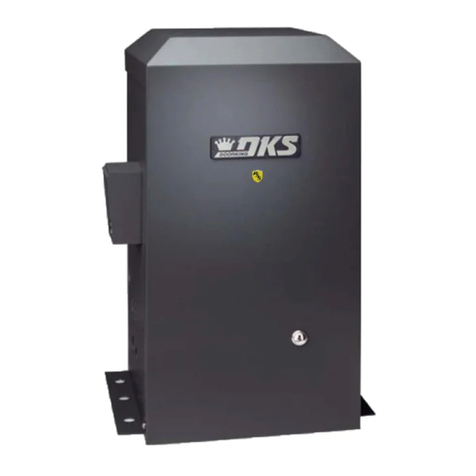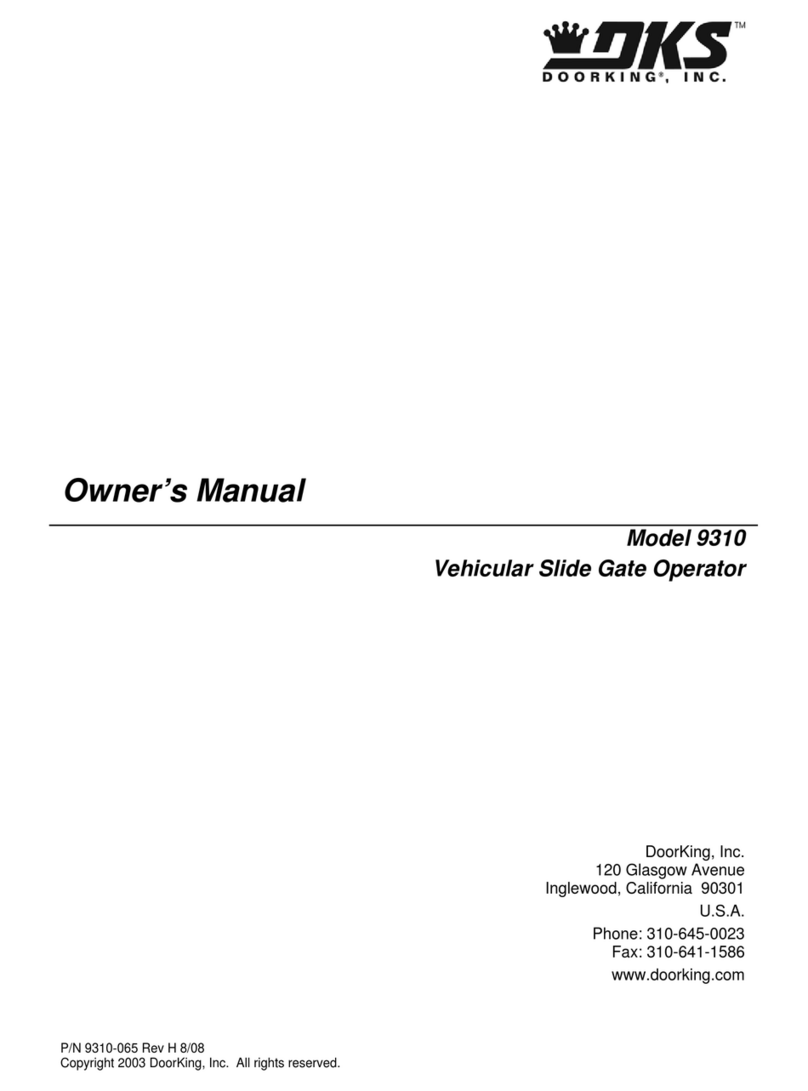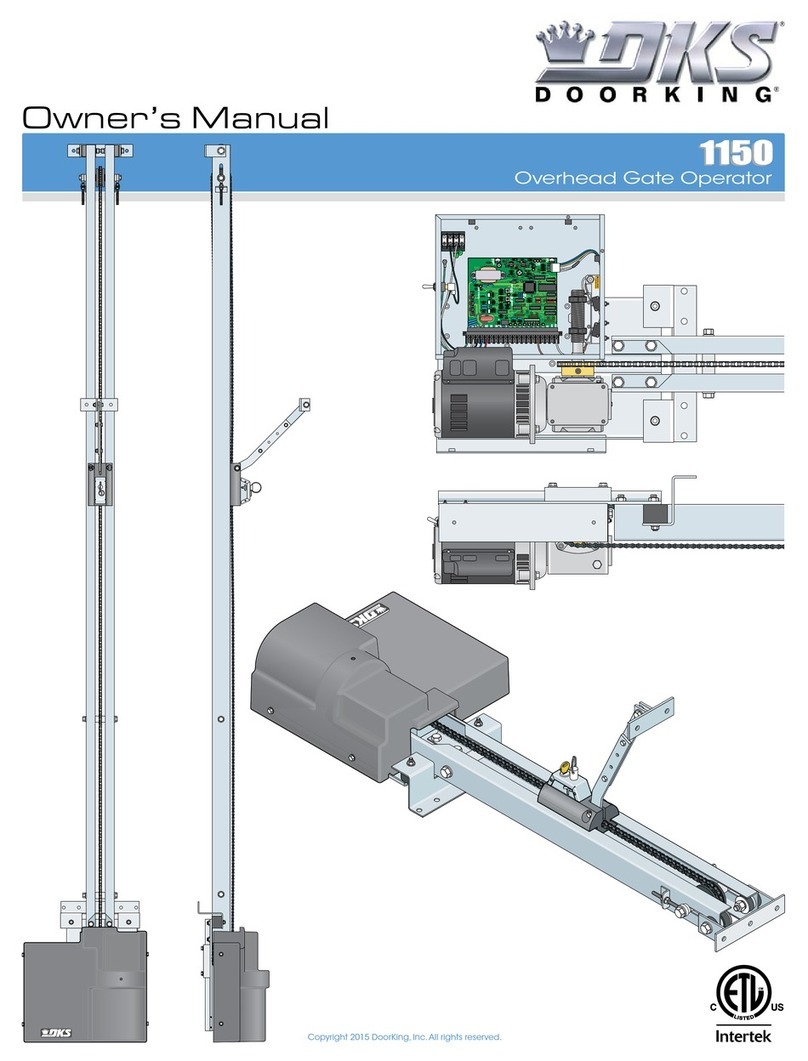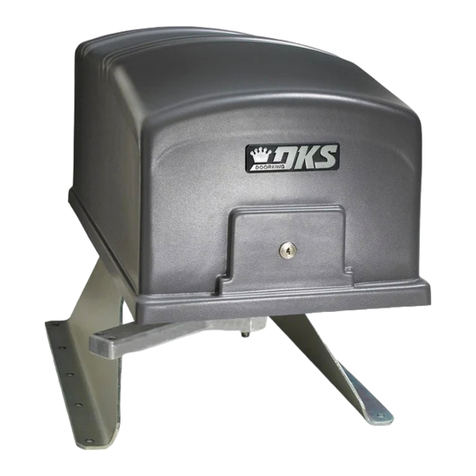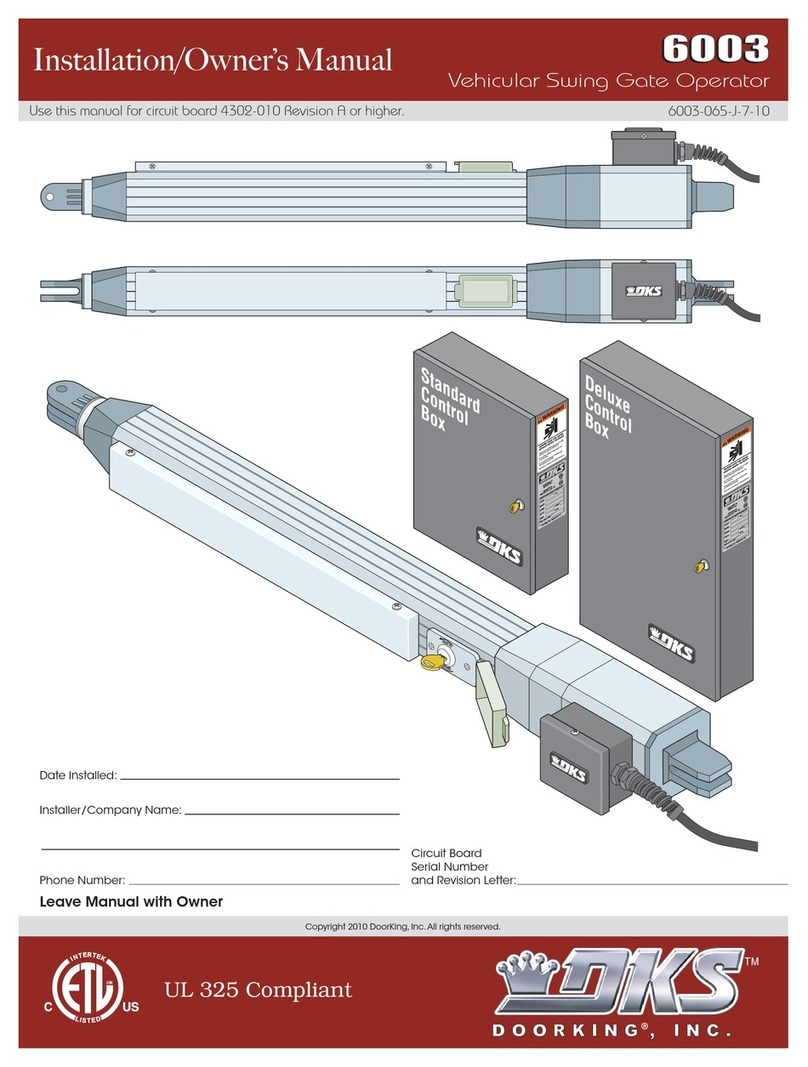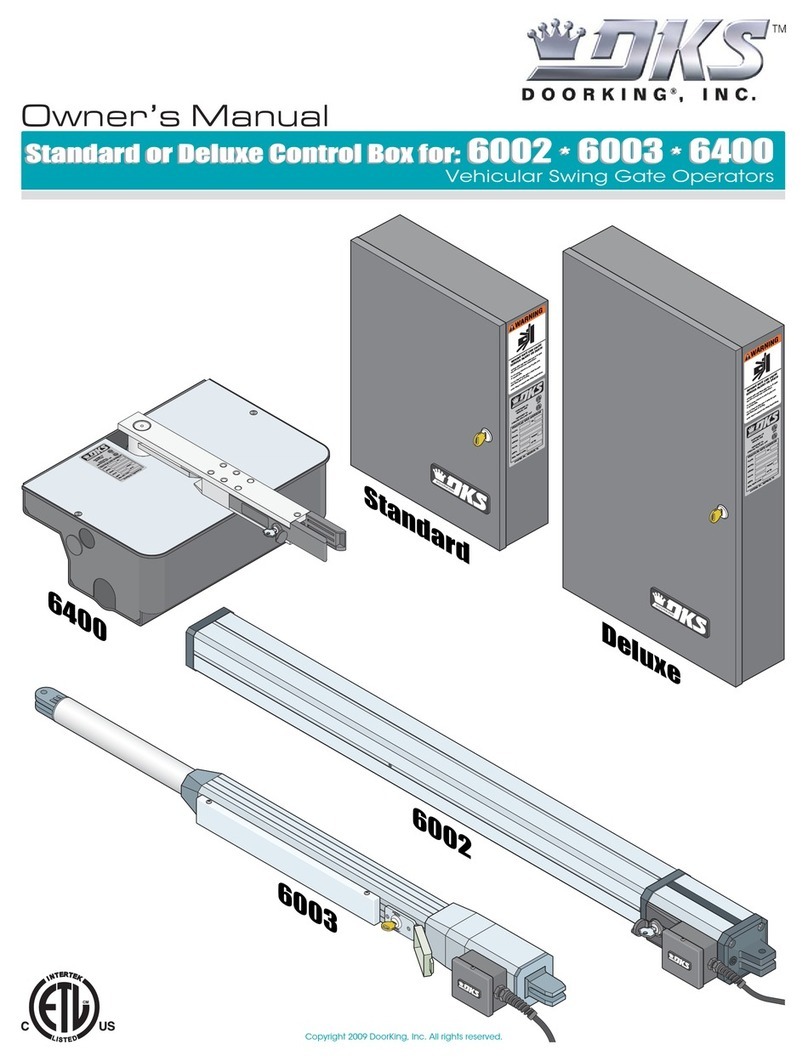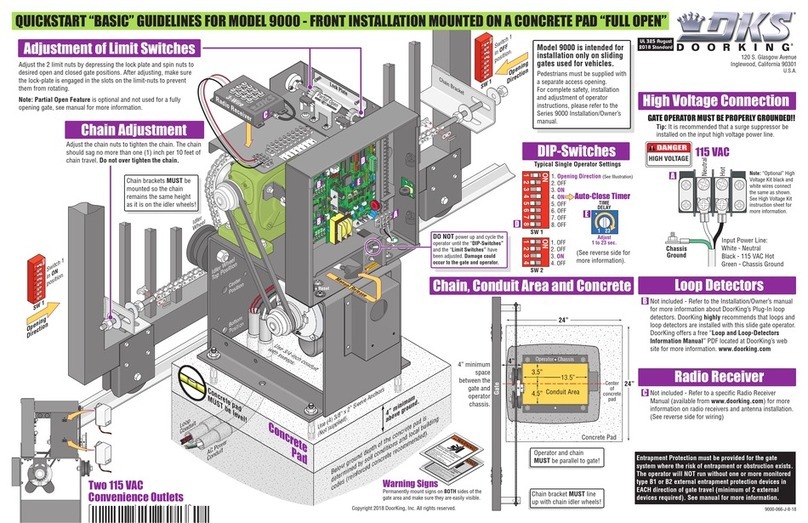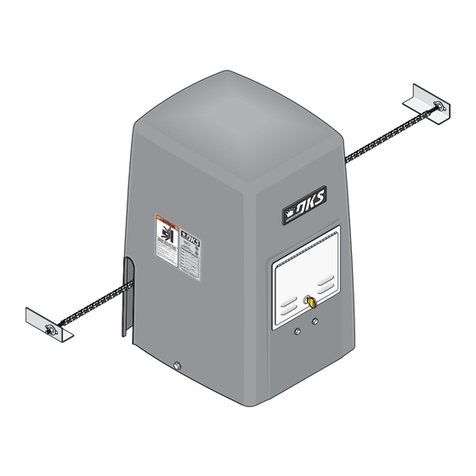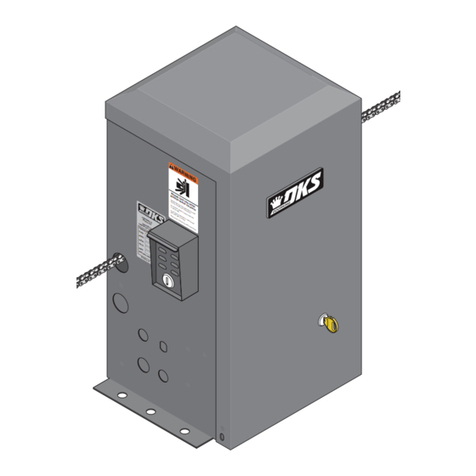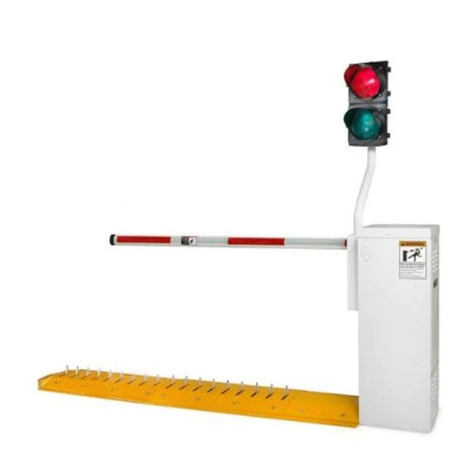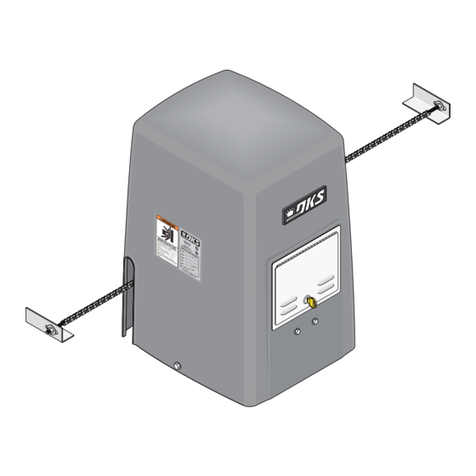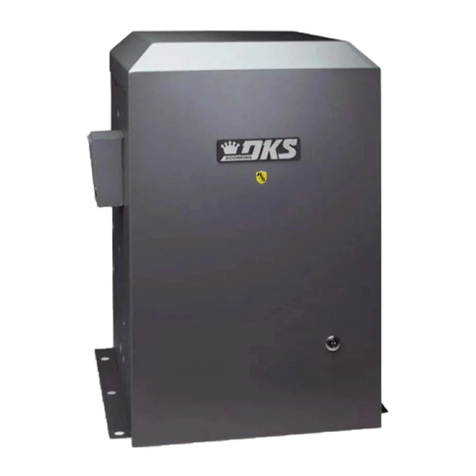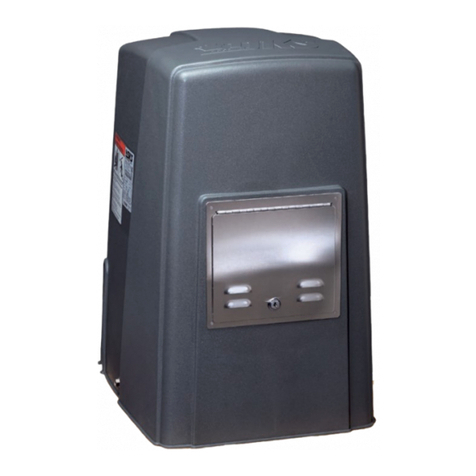
1150-065-B-05-07 installation guide 5
Gate Construction
Instructions for Intended Installation
general information/safety information
Vehicular gates should be constructed and installed in
accordance with ASTM F2200; Standard Specification
for Automated Vehicular Gate Construction. For a copy
of this standard, contact ASTM directly at 610-832-9585;
Controls intended for user activation must be located
at least ten feet (10’) away from any moving part of the
gate and where the user is prevented from reaching
over, under, around or through the gate to operate the
controls. Outdoor or easily accessible controls should
have a security feature to prevent unauthorized use.
The Stop and/or Reset button must be located in the
line-of-sight of the gate. Activation of the reset control
shall not cause the operator to start.
A minimum of two (2)WARNING SIGNS shall be installed,
one on each side of the gate where easily visible.
For gate operators utilizing a non-contact sensor:
1. See the instructions on the placement
of non-contact sensors for each type
of application.
2. Care shall be exercised to reduce the risk of
nuisance tripping, such as when a vehicle
trips the sensor while the gate is still moving
in the opening direction.
3. One or more non-contact sensors shall
be located where the risk of entrapment or
obstruction exist, such as the perimeter
reachable by a moving gate or barrier.
For gate operators utilizing contact sensors:
1. One or more contact sensors shall be
located where the risk of entrapment or
obstruction exist, such as at the leading
edge, trailing edge, and post mounted both
inside and outside of a vehicular horizontal
slide gate.
2. One or more contact sensors shall be
located at the bottom edge of a vehicular
vertical lift gate.
3. One or more contact sensors shall
be located at the pinch point of a
vehicular vertical pivot gate.
4. A hardwired contact sensor shall be
located and its wiring arranged so that the
communication between the sensor and the
gate operator is not subjected to mechanical
damage.
5. A wireless contact sensor such as one that
transmits radio frequency (RF) signals to
the gate operator for entrapment protection
functions shall be located where the
transmission of the signals are not obstructed
or impeded by building structures, natural
landscaping or similar obstructions. A
wireless contact sensor shall function under
the intended end-use conditions.
6. One or more contact sensors shall be located
at the bottom edge of a vertical barrier (arm).
Install the gate operator only if:
1. The operator is appropriate for the construction
of the gate and the usage class of the gate.
2. All openings of a horizontal slide gate are
guarded or screened from the bottom
of the gate to a minimum of 4 feet (1.22 m)
above the ground to prevent a 2 ¼ inch
(57.2 mm) diameter sphere from passing
through the openings anywhere in the gate,
and in that portion of the adjacent fence that
the gate covers in the open position.
3. All exposed pinch points are eliminated or
guarded.
4. Guarding is supplied for exposed rollers.
The operator is intended for installation only on gates
used for vehicles. Pedestrians must be supplied with a
separate access opening. The pedestrian access opening
shall be designed to promote pedestrian usage. Locate
the gate such that persons will not come in contact with
the vehicular gate during the entire path of travel of the
vehicular gate.
The gate must be installed in a location so that enough
clearance is supplied between the gate and adjacent
structures when opening and closing to reduce the risk of
entrapment. Swinging gates should not open into public
access areas.
The gate must be properly installed and work freely in both
directions prior to the installation of the gate operator.
Do not over-tighten the operator clutch, pressure relief
valve or reduce reversing sensitivity to compensate for a
damaged gate.
For gate operators utilizing Type D protection:
1. The gate operator controls must be placed so
that the user has full view of the gate area when
the gate is moving.
2. A warning placard shall be placed adjacent to
the controls.
3. An automatic closing device (such as a timer,
loop sensor, or similar device) shall not be used.
4. No other activation device shall be connected.








